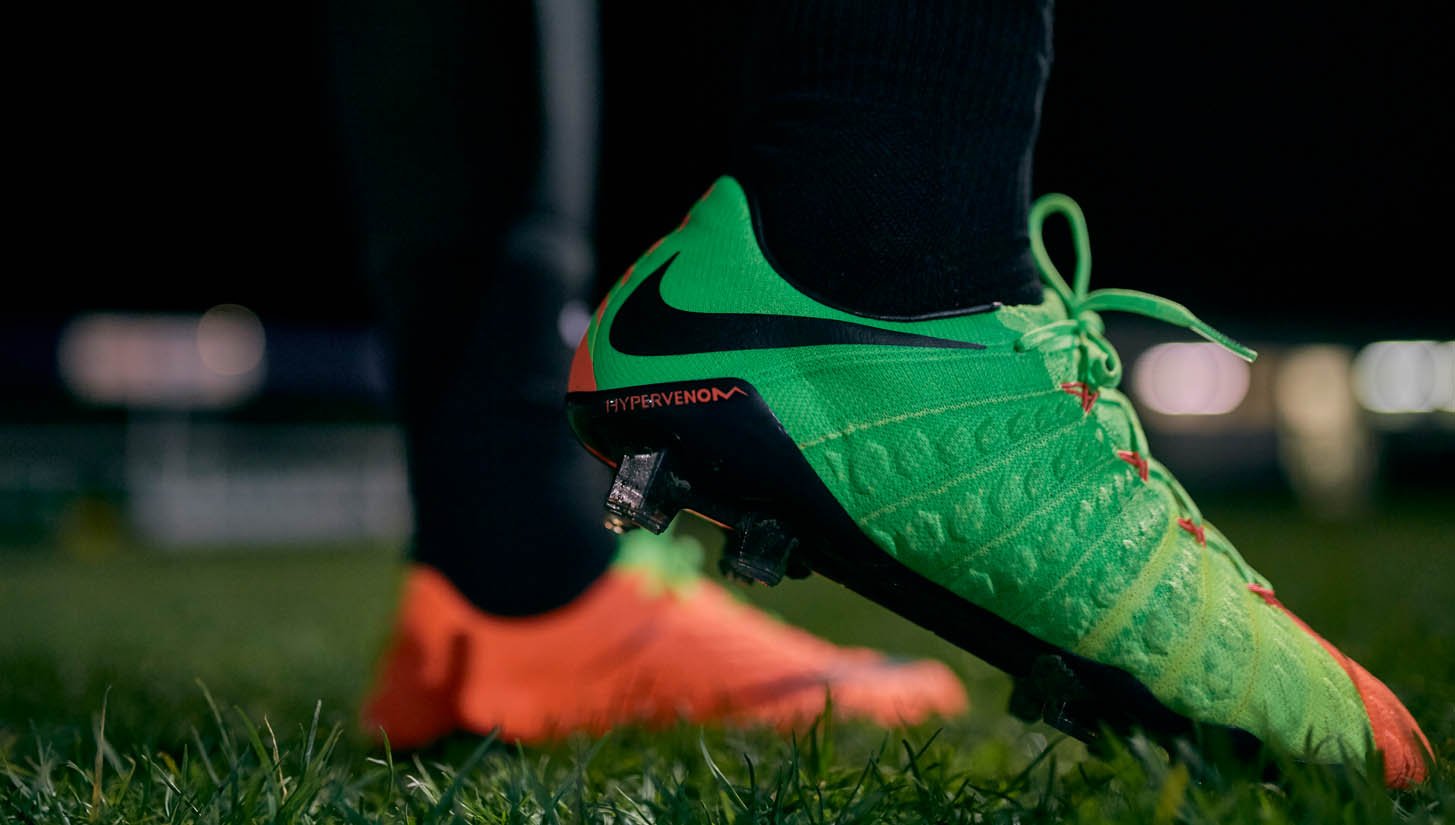
DISSECTING DIFFERENT COMPONENTS OF THE NIKE HYPERVENOM 3
Nike Hypervenom 3 Releases in 2017
In 2017 Nike releases the Hypevenom 3 in a volt green and bright orange colorway. This boot followed the evolution of its predecessors being offered in both a high-top version or low-top version. The difference, the low-top version was the first boot made by Nike that had flyknit in a low-top version. This allowed the option for athletes to choose between a flyknit ankle collar or not. The boot was marketed to strikers, with its 2 main purposes, cutting and striking. The Hypervenom 3 also featured a new Hyper-Reactive soleplate, different from the previous 2 models. Players such as Allie Long, Ross Barkley, and Kylian Mbappe all wear the low top version of the Nike Hypervenom 3 listed below:
AFTER LIFE OF A NIKE BOOT
Project objective: Understand the individual components of a football boot.
Boot used for project: Nike Hypervenom 3.
Goal of the project: Examine the evolution of the football boot through small progressions.
Location of project: University of Oregon’s Innovation Lab.
Assistance provided by: Professor Greg Leedy.
THE LOCKDOWN FEEL
Flywire technology used for eyelets and lockdown feel
Vectran pieces are strung down to the footbed for a tighter feel when the laces are tightened
Non-slip collar liner on the heel for optimal movement while playing.
ONE-PIECE UPPER
Boot dissected into two parts: upper and soleplate
Upper is a one-piece made up of three layers: 2 external and 1 internal
Upper has TPU coating for "ACC, All Conditions Control"
Points in upper exposed to water or exterior conditions: where foot enters and laces
Flyknit is the next layer, an engineered mesh foundation of the upper
First low-top boot from Nike to offer flyknit
HYPERVENOM 1 VS HYPERVENOM 3
The Hypervenom 3 introduced a new soleplate with a different stud pattern.
Comparing the 1st and 3rd versions of the Hypervenom was reasonable as the 1st and 2nd were almost identical.
The new soleplate featured a Hyper-Reactive plate combining a flexible Pebax® material.
Pebax® material is commonly used on boot studs, but the Hypervenom 3 had a unique stud shape.
The medial studs were hexagonal-shaped, while the lateral studs were arrow-shaped, improving traction for lateral cuts.
Flex grooves were added on the forefoot to allow for more flexibility.
UNDERSTANDING THE SOLEPLATE
Two parts of the Hypervenom were focused on: heel and forefoot
Heel has carbon-injected bridges for stability, with two back studs having two bridges for stiffness, and the middle bridge is made of carbon-injected nylon
Forefoot has flex grooves for flexion, allowing the boot to react properly when players strike the foot
Flexibility in the forefoot can cause upper tears in the highlighted areas over time
The question posed on how companies can maintain flexibility without sacrificing durability
TAKEAWAYS
This project made me reflect on the importance of football boots in my life and how they are like an extension of my body that allow me to play with confidence.
The Nike Hypervenom 3 is a complex boot that pushes the boundaries of the game with its multiple layers of functionality and unique soleplate design.
The boot's upper features a one-piece Flyknit construction, TPU coating, and Vectran fabric for support and durability.
The heel of the boot has carbon-injected bridges that offer stability and lockdown, while the forefoot has flex grooves for flexibility and proper reaction during play.
In 2017, the Hypervenom 3 was one of the best boots on the market, but it has since been discontinued. However, the upcoming World Cup in 2022 promises to bring new and exciting boots with fresh colorways and stories.



